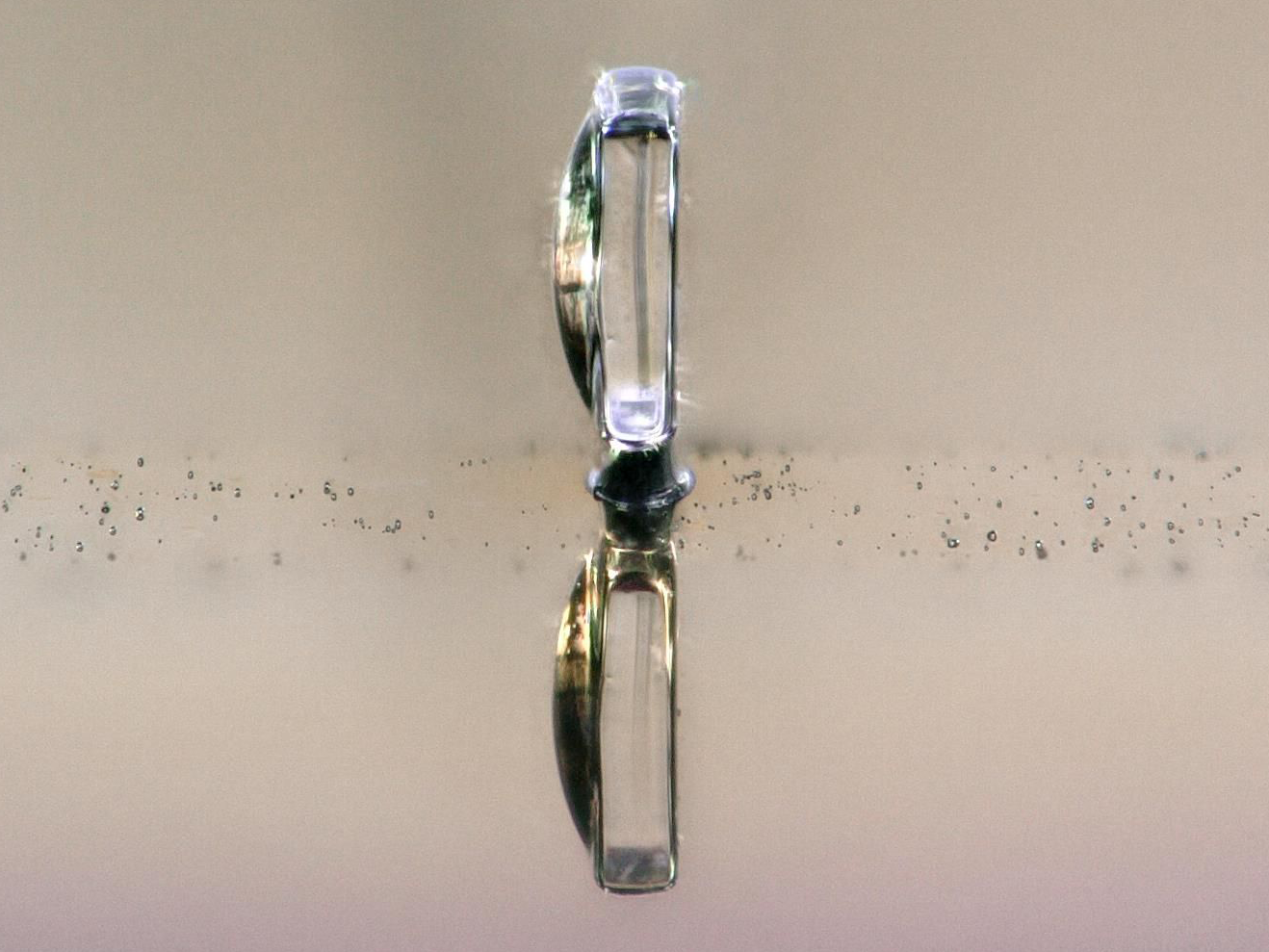News & Press
Smooth Glass from the 3D Printer
Freiburg researchers succeed in producing microstructures with a roughness of just a few nanometers

Side view of a lens made of fused silica glass (Source: Bastian Rapp).
Silica glass is characterized by outstanding chemical and mechanical stability. It thus is the preferred material in advanced technical applications. For micro-optical and biomedical processes, the ability to precisely process and fabricate microstructures from fused silica is of outstanding importance. Prof. Dr. Bastian Rapp, Dr. Dorothea Helmer and Dr. Frederik Kotz from the University of Freiburg have succeeded for the first time in producing such microstructures with a low surface roughness using the 3D printing technology of two-photon polymerization. The team has presented its results in the journal Advanced Materials.
Two-photon polymerization has become an established technique in recent years for printing plastics, ceramics or metal. The Freiburg team used the process to produce glass microstructures with a resolution of tenth of micrometers, which have a particularly low surface roughness of 6 nanometers. Until now, printed glass microstructures have had a roughness of between 40 and 200 nanometers. In order to be considered for optical applications, they still require complex post-treatment.
Rapp and the team have developed a material known as Glassomer®, which they used in the process. This is a mixture of high-purity silicon oxide in fine powder form and a liquid polymeric resin. While this mixture is liquid, it can be processed like a plastic. It then hardens on exposure to light so that it can be drilled or milled. During the final heat treatment step in the process, the plastic is decomposed leaving a dense glass component.
„This technology allows, for the very first time, to process glass using one of the most exciting 3D printing techniques. With this, previously unachievable structural details and components with outstanding complexity will become readily accessible”, says Rapp.
Bastian Rapp is Professor of Process Technology and head of the NeptunLab at the Department of Microsystems Engineering at the University of Freiburg, where Dorothea Helmer and Frederik Kotz are postdoctoral researchers and group leaders. Rapp and Helmer are also members of the livMatS cluster of excellence.
Original publication:
Kotz, F., Quick, A. S., Risch, P., Martin, T., Hoose, T., Thiel, M., Helmer, D., Rapp, B. E. (2021). Two‐Photon Polymerization of Nanocomposites for the Fabrication of Transparent Fused Silica Glass Microstructures. Advanced Materials. doi: 10.1002/adma.202006341
